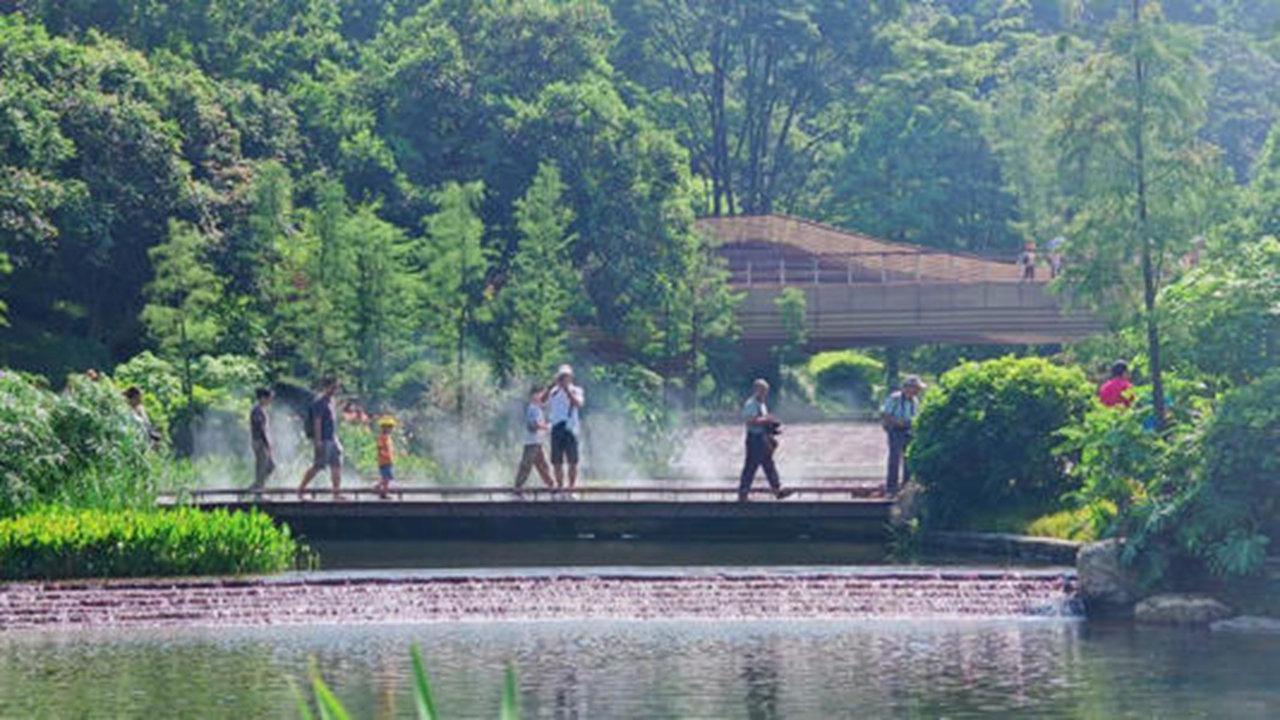Yunxi Botanical Garden welcomes visitors
Writer: Wei Jie | Editor: Lin Qiuying | From: Shenzhen Daily | Updated: 2024-08-08
Housing a natural history education hall, five special plant species demonstration zones and three ecological trails, the Yunxi Botanical Garden is set to open its doors to public tomorrow in Guangzhou, Guangdong Province.

A view of the Yunxi Botanical Garden. File photo
Spanning 35 hectares at the western foot of the Baiyun Mountain Scenic Area, the Yunxi Botanical Garden serves as one of Guangzhou’s demonstration areas for the relocation and conservation of biodiversity.
It took three years to construct the botanical garden, which is home to approximately 1,300 plant species. Within these plants, 20 species are on the first class of the national plant protection list. Notably, the Chinese manglietiastrum, dubbed the “giant panda of the plant world,” is among the precious protected plants, with 57 trees of the this species thriving in the garden.
A recent Guangzhou Daily report highlighted that the Yunxi Botanical Garden features five display gardens tailored for new and excellent flowers, water lilies, honey plants, rare plants and wild peonies, respectively. Each was designed to showcase plants of varying climate types from tropical to subtropical regions. Through techniques such as terrain shaping, plant arrangement and ecological restoration, these display gardens have been meticulously curated based on the growth habits of the plants.
In addition to its collection of the precious species, visitors will discover native plants such as Chinese pearl barley.
“Look at the mimosas, which are a rare sight in urban areas nowadays. We specifically grow a field of mimosas here,” said Wu Yuyi, director of the Yunxi Botanical Garden.
Wu said they will host a series of plant-themed activities, such as “Dr. Science in Yunxi” botanic popularization seminars, “Rare Plants Exhibition” and “Lingnan-style Bonsai Exhibition,” as part of their efforts to enhance public understanding and appreciation of biodiversity.
These knowledge popularization activities will be organized on a regular basis to provide a closer look at nature’s wonders.
According to Wu, the Yunxi Botanical Garden has several nature education trails through rich plant resources, featuring knowledge tags designed around the theme of rich plant resources and fascinating botanical stories. These trails are adorned with exquisite science popularization signs and fascinating botanical stories. More than 1,000 plant identification signs with QR codes are attached to the plants, forming a self-guided science education system within the garden.